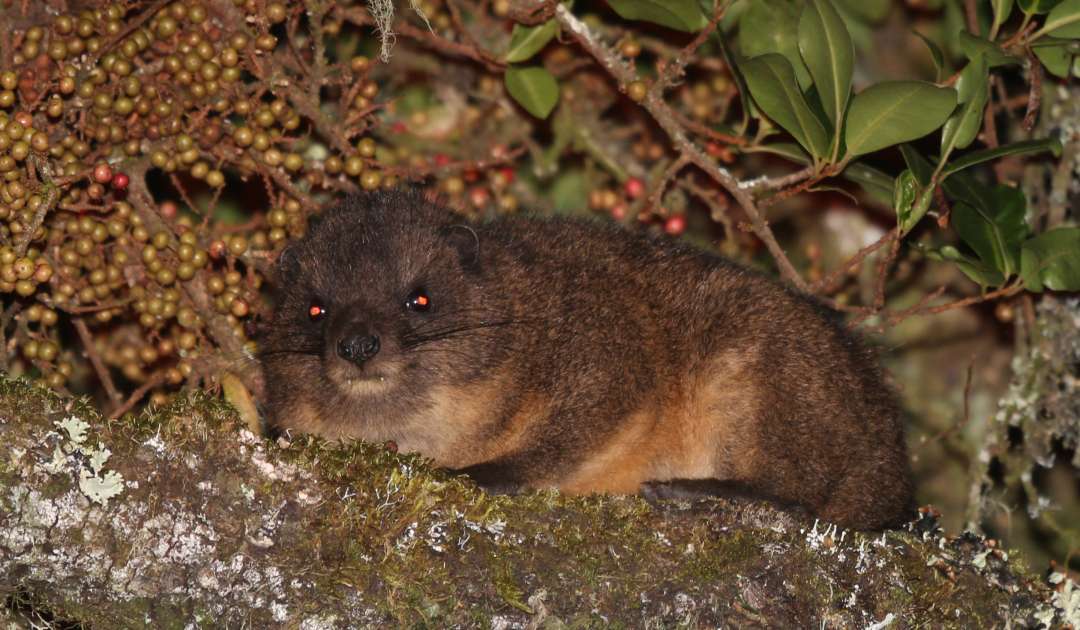
Tree hyraxes (Dendrohyrax spp.) are related to elephants and manatees. They are nocturnal and live in the canopy of the tropical forest in Africa. Due to extensive hunting in the past and deforestation, there is urgent need to study remaining tree hyrax populations. Tree hyraxes are vocally very active. Different counter-calls are bounced from individual to individual within their group, one group may use more than 2000 calls within one night. Different species of tree hyraxes can be identified from their calls. Tree hyraxes have been studied so little, that it may be possible that even new species will be found.
With passive automatic monitoring (PAM) we study tree hyrax distribution, estimate population size, level of human-caused disturbance, and taxonomy. As forests are decreasing and tree hyraxes are being hunted, our goal is to map current populations as a first important step in their conservation. Natural history with long isolation periods in the Eastern Arc Mountains may have led to speciation of tree hyraxes, and this makes Tanzania the most interesting location for tree hyrax research. In most locations, tree hyraxes are found from same habitats with other nocturnal mammals, dwarf galagos (Paragalago spp.). Mapping different species of dwarf galagos, reveal interesting patterns in distribution, dispersal and biogeography in Eastern Arc Mountains and more resent volcanic mountains, like Kilimanjaro.
Objectives
- Locating tree hyrax populations, and map their distribution on different mountains
- Estimating population size and disturbance level of each population
- Describing acoustic calls from each mountain
- Comparing loud calls from different mountains, to reveal taxonomic differences
- Photograph tree hyraxes belonging to different populations
Outcomes
Our project will provide baseline data for tree hyrax conservation in Tanzania. This project will also produce valuable new information on tree hyraxes in general, as they have never before been studied to this extent in the field. We hope to raise interest in tree hyraxes both locally and globally as their populations are decreasing across Africa. Our results will be combined with other Kili-SES subprojects, and this will produce an interesting synthesis on how nocturnal mammals respond to changes related to e.g. vegetation, and to anthropogenic drivers.
Team members
Hanna Rosti (Principal Investigator)
Dr. Henry Pihlström (Principal Investigator)
Dr. Claudia Hemp (Counterpart)
Prof. Dr. Jouko Rikkinen (Counterpart)
Dr. Charles Kilawe (Counterpart)
(for more information see People page)